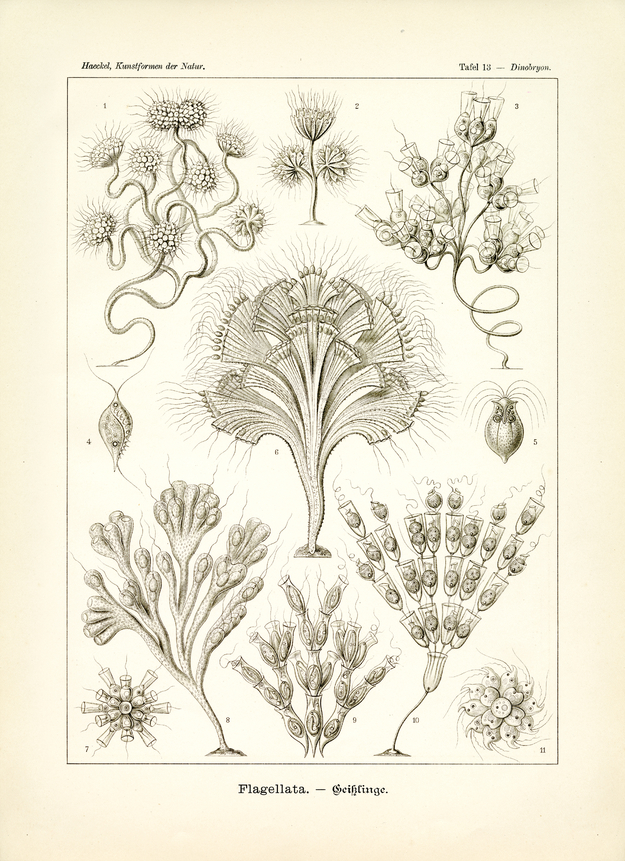Translation of the original German introduction by Ernst Haeckel:
Phylum of Protozoa (Urtiere); - class of Infusoria (Infusionstiere); - subclass of Flagellata (Geißlinge).
The bodies of Flagellata (Geißlinge or Geißelinfusorien) consists of a simple cell that bears one or two, rarely more Flagella at one spot of the body; they are moved in an oscillating way like whips and are used for locomotion by the forms that swim freely, by the fixed ones for swirling in the water to supply nutrition and oxygen. Many Flagellata live isolated as individual cells (fig. 4, 5) in ocean as well as fresh water; some as parasites in the interior of other organisms. Many other Elagellata form delicate colonies or ‘cell unions’ (Coenobia); the cells that live united on these, sit at times free, in groups, at the ends of branched-off stems (fig. 1-3), or live in tubes or cup-shaped capsules into which they retreat for protection (fig. 6-10).
Translation by VR Translators Bangalore
We've scanned the original lithography at 1200dpi on the Epson A3 scanner of A3 scanner huren. You can download a 400dpi JPEG here.
